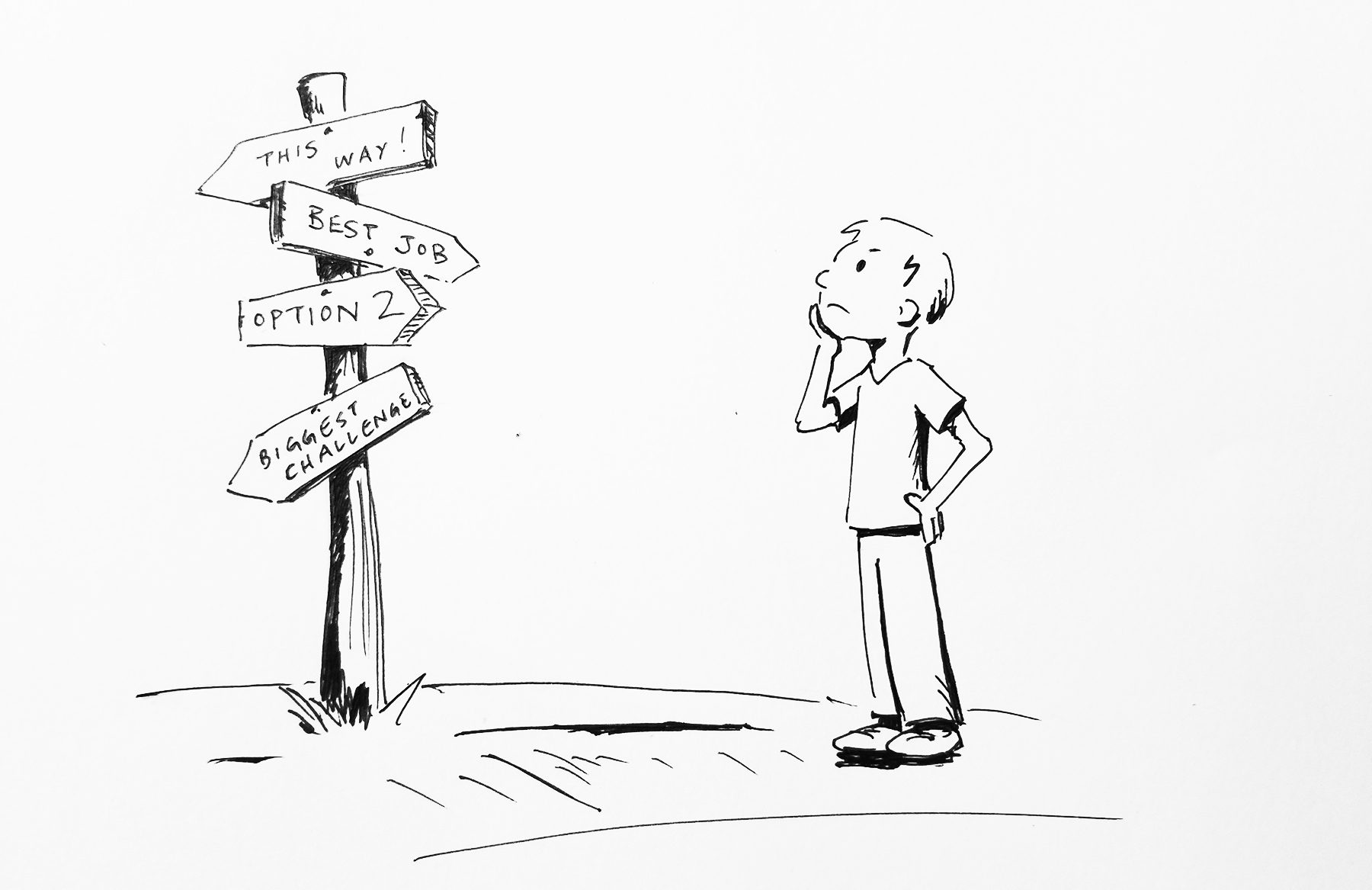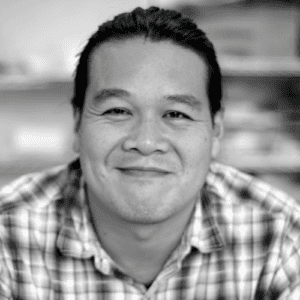Arts education career options can seem limited to some. Many people think teaching, in the traditional sense, is the only option. In reality, there are many different paths an educator can follow to fulfill their passion for the arts and teaching. During my own career, I’ve worked in academia, at a community art center, in museums, schools, and lots of places in between.
Below are 5 potential career choices for those who may have decided to move outside the classroom and onto a new challenge and adventure!
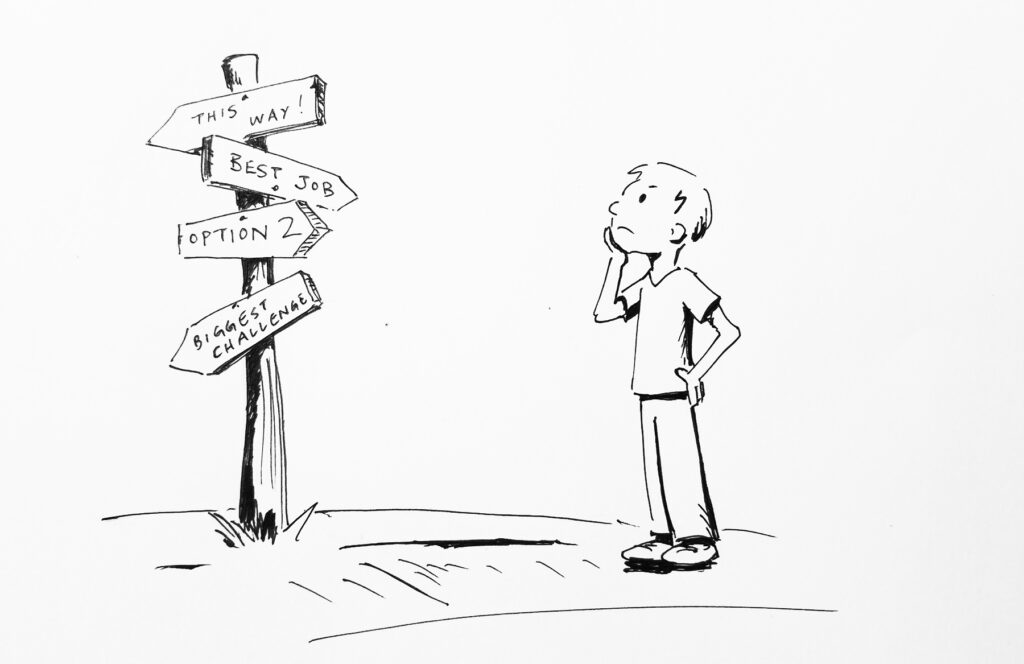
1. If you love being flexible and changing scenery, you might want to be…a teaching artist!
The skills of teaching artists have a fair amount of overlap with those of a classroom art teacher. There is a great deal of flexibility needed, as teaching artists typically have more than one job or program running at the same time. It’s a lifestyle akin to that of a freelance writer or consultant. This flexible schedule works especially well for many practicing artists because it allows them the ability to work on their own practice, while also earning a paycheck. As a teaching artist, you might be doing a long-term residency at a school, running an artmaking workshop for a special event at a museum, or teaching a weekly class at a community center. And, of course, you might be doing all of these at the same time!
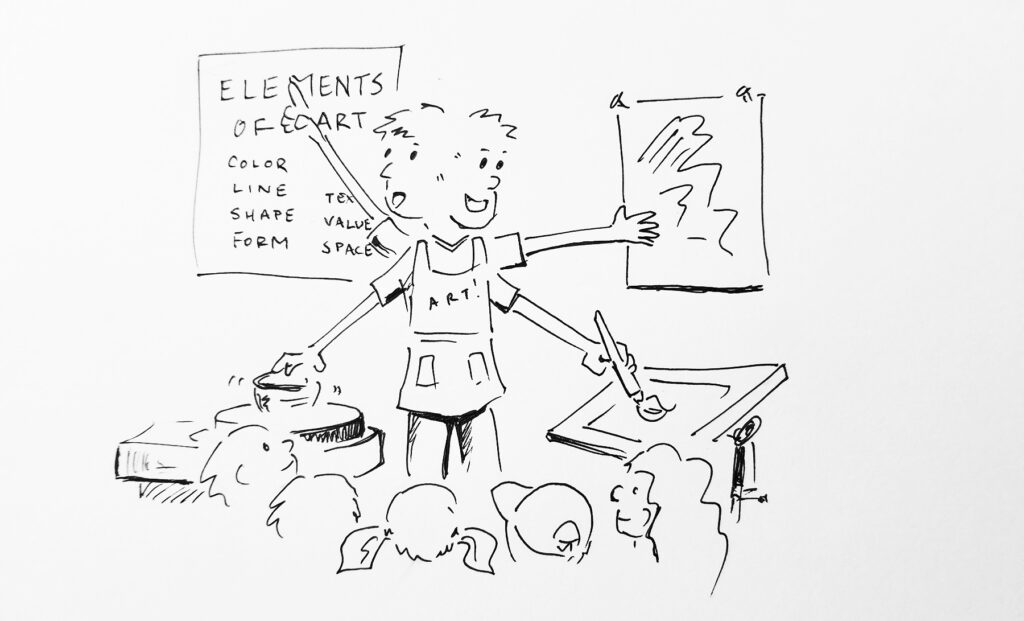
Things to Know
You’ll be doing your own taxes and paperwork, so keep good records! In addition, teaching artists are normally treated as contractors paid hourly and don’t get the same benefits as some other types of employees (health care, etc.).
You’ll need to have contacts with multiple organizations and schools; ensuring your name is on their roster of teaching artists helps keep you in the loop for any potential jobs or programs as they open up. As I mentioned earlier, teaching artists often work at multiple sites, so you may find yourself having to balance vastly different projects at the same time.
Finally, you should know teaching artists are sometimes viewed as competing with art teachers. Districts that can’t afford to staff an art teacher have been known to use teaching artists as a cheaper alternative. The role of a teaching artist can never replace a staffed art teacher, but they can be a great collaborator for schools to deepen and enrich arts programming.
How to Get Started
A B.F.A. or M.F.A. will show a degree of skill and ability in working as an artist. In addition, having a desire to work with varying age groups and a range of media is an important aspect of this profession. You never know exactly what you might end up doing for any particular program, so keep an open mind!
To begin in this field, start by contacting the education department at your local museum or community art center to see if they’re looking for artists to partner with on projects or programs. Connect with teachers and program managers at different organizations and open house events. And get to know other teaching artists! There are great networks of artists on social media that can provide introductions to organizations or support after you’re working for a site by sharing project ideas. Being able to make connections is an essential part of being a teaching artist.
2. If you love teaching from artwork/artifacts and engaging audiences of all ages, you might want to be…a museum educator!
Working as an educator in a museum requires a comfort level with public speaking and the ability to connect to a multi-generational audience. One day you might be giving a tour of ancient Egyptian art to a class of second-graders; the next, you could be talking best practices in the classroom with English teachers. And you could end your week training docents for the upcoming blockbuster exhibition!
Whatever the case, knowing how to find an entry point with the audience and making the objects in the museum come alive for them are essential. Being a museum educator means working with all departments of the institution, including curatorial, marketing, and facilities. There are chances to have a voice in the institutional mission and priorities and shape the public face of the organization.
Things to Know
There are various departments within the educational wing of most large museums. These could include adult programs, teen programs, teacher programs, and youth and family programs. At a smaller institution, there might only be one educator on staff, and all of these programs would fall under your purview. You could find yourself stapling and stuffing folders for an upcoming program and then heading into a meeting with the board in the same afternoon. The job title can encompass a lot, and is well-suited for someone who likes variety.
How to Get Started
A graduate degree in art education or museum studies is usually a requirement, though sometimes employers can be flexible. Completing an internship with a local art museum or institution is also a great way to pick up skills and contacts. If you’ve worked as an intern, it can give you an inside track to a position at the organization when one opens up. It can also provide links to museum educators at other organizations if you decide to move on. At larger institutions, there is usually room for advancement, progressing from a coordinator to a manager and ultimately a director role.
3. If you love organization and thinking big picture, you might want to be…a school arts administrator.
Some school districts have an individual or a team in charge of arts programming, instruction, assessment, and more for the art teachers at their schools. An arts administrator is no longer a teacher but does look at how arts instruction works in concert with other curricular areas like math and English. You also get to seek out and build partnerships with local cultural institutions. Someone in this field gets to have a voice in the larger curricular direction of the district and is an art teacher’s best advocate for funding and supplies.
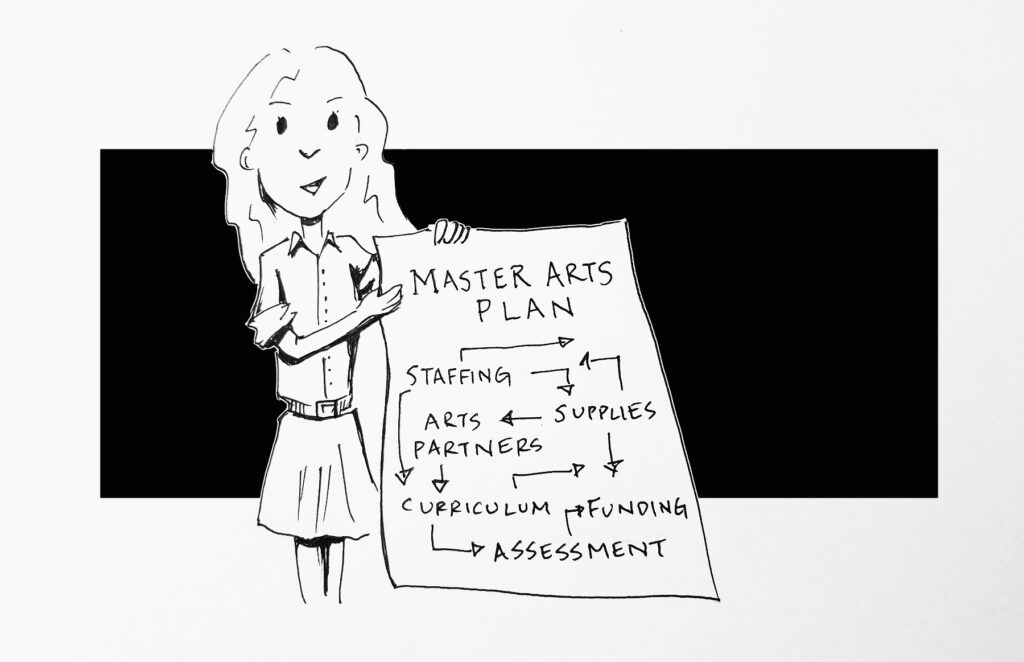
Things to Know
Being the person in charge of arts programming at a district level is a vital role, but also can be challenging as you’re forced to balance larger district priorities against the ground-level needs of teachers. You’re no longer one of the teachers, and this shift in role and influence can be difficult to navigate.
When budgets are tight, and cuts have to be made, you will often be the one called on to make difficult decisions for the arts. However, you can have a much larger impact on teaching and instruction and influence larger-scale changes to the curriculum in a positive way for the arts. You’ll also get to identify professional development needs for the art teachers in the district and often serve as a facilitator for these programs.
How to Get Started
Being an art teacher is the primary route to becoming an arts administrator. Knowing the district and being able to speak to the needs and challenges teachers are experiencing makes you a better advocate. Getting involved in district-wide committees and initiatives also helps give art teachers a better sense of what’s happening in the bigger picture. Work on assessment or curricular projects with other teachers and administrators. Hone your skills as a communicator and facilitator, as you’ll often be speaking to large groups of teachers and administrators.
4. If you have a passion for planning and connecting with a community, you might want to be a…community arts organizer/program staff!
Similar in scope to the museum educator, community arts organizers/program staff must be able to work with a range of audiences and media, but often without utilizing artifacts or artworks from a museum’s collection. You will be working to connect students, families, and schools with opportunities for your organization.
This includes bringing students to classes at your site and managing teaching artists providing workshops or residencies at another site. Being organized is crucial, as you are often managing budgets, supplies, and schedules for multiple programs. More than anything, you’ll be looked to as a connector for the various audiences and organizations in your community.
Things to Know
No two days are alike for folks in community arts organizations! You might be filling in for a teaching artist, budgeting and ordering supplies, or promoting your program options to a principal on any given day. Staying in tune to the needs and priorities of a community is vital for this role. What’s most important to your audience? Free arts programs for teens? Advanced technical or skills-based classes? Space for artists to gather and network? It will be your job to find out and find programs to meet those needs.
How to Get Started
Some graduate work in arts education helps, but more than anything, remaining involved in the community and being aware of its needs and priorities is a huge part of this job. Living in and being a part of the community make a big difference for organizations, and is how many program staff initially get involved. Contact the leadership of an organization you’re interested in and volunteer or intern.
5. If you love thinking about theory and pedagogy, you might want to be…in higher education!
Teaching at the higher ed level involves a different set of skills and approaches than teaching in K-12 settings. College and graduate programs in the fine arts and art education are training grounds for future teachers and artists. Instructors at this level are a combination of full-time tenured faculty and part-time lecturers. At the higher ed level, you might choose to teach studio teaching practices, engaging with students on both technical and conceptual levels. Or you might work in an arts education department on curriculum, instruction, assessment, or theory and practice.
Things to Know
Full-time positions are difficult to come by and highly competitive. Entering as a part-time lecturer is more common and can be a great showcase of a particular skill or area of expertise. Teaching involves varying levels of commitment. Studio classes meet for several hours at a time, but often only once a week. Theory and classroom practice courses can meet once or twice a week but for less time.
Full-time faculty are expected to be completing research and maintaining an active artistic practice while teaching. There are also committees and program expectations for these faculty members. Part-time faculty doesn’t have the same expectations outside of the classroom, but they also are compensated at a lower rate and usually do not receive benefits. The classroom dynamics are also different, as you might be working with students who are older than you, have had more life experience, and also hold significantly different pedagogical stances.
How to Get Started
A terminal degree is often required for tenure-track staff at most colleges and universities (M.F.A. or Ph.D.). Reconnecting with institutions you’ve attended is a good start, and staying attuned to the specialties of that institution and how you might fit is important. Also, being available to guest lecture or work with current faculty can help get your foot in the door. Finally, being a current graduate student may provide opportunities to teach and work with the institution and give you a foundation of teaching at higher education upon which to build.
These are just a few of the opportunities that exist outside of the K-12 art classroom for art educators. The field is flexible and full of other opportunities. If you’re passionate and committed, you’ll be able to find your fit!
In what other roles have you worked within art education?
How did you get your start as an arts educator?
Magazine articles and podcasts are opinions of professional education contributors and do not necessarily represent the position of the Art of Education University (AOEU) or its academic offerings. Contributors use terms in the way they are most often talked about in the scope of their educational experiences.
